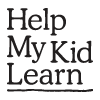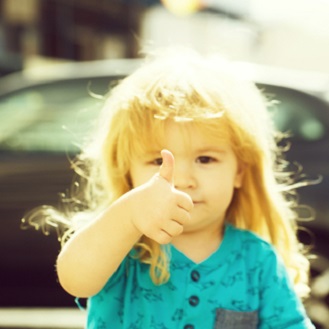What to do with this activity?
Even before a child can talk, they can express themselves using their hands. A lot of the ways we humans use our hands is universal communication - like covering our face with our hands if we are upset, or covering our ears with our hands if something is too loud.
Other hand signs are learned and shared. Show your child how to make some common hand signs: clap their hands to show they are pleased; thumbs up if they agree; high five for congratulations; make a heart shape for "I love you"; or fingers crossed for "hope so". You might like to make up your own secret language of hand signs.
Hand signing can have other benefits. Some children find it easier to communicate their needs and wishes without speaking. If you would like to read more and learn other hand signs, have a look at this link from Healthline Parenthood.
-
Why am I doing this?
Talking is one of the most important skills your child will learn. It seems to happen naturally, but in fact you have a very important role to play. Your baby will learn to talk by hearing other people talk. The more you talk with your baby and respond to their noises and babbles, the more you help them learn to communicate. This will help them in every aspect of their life.
-
How can I do more?
Songs and rhymes are especially good for children as the rhythms and repetitive language make it easier for babies to learn language skills. Babies love songs and rhymes, especially hearing the sound of your voice. This is a great way to help your child to talk and listen. Rhymes with actions explain what words mean - "pour me out" in "I'm a little teapot". You can also create sound effects when you are singing songs and saying rhymes. Use your hands to clap, your fingers to click and your mouth to make playful sounds and whistles.
Rate this activity
How would you rate this activity?
1 = Poor, 5 = Great.



